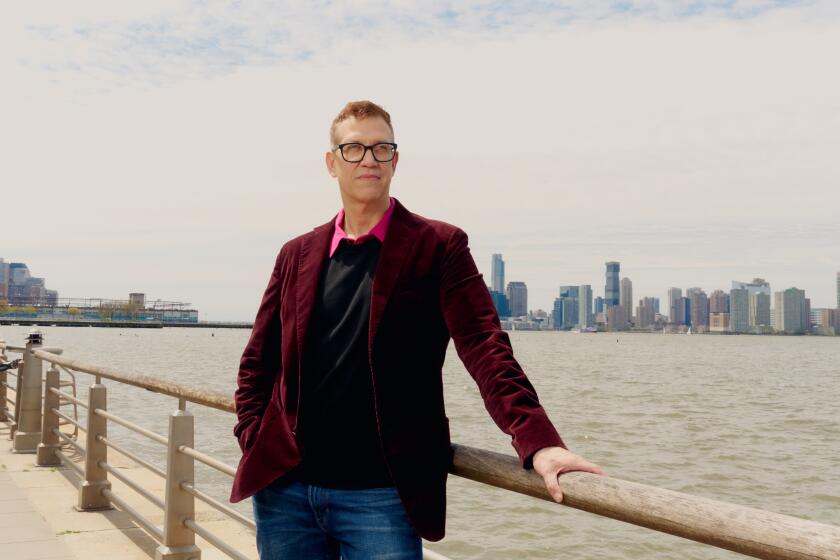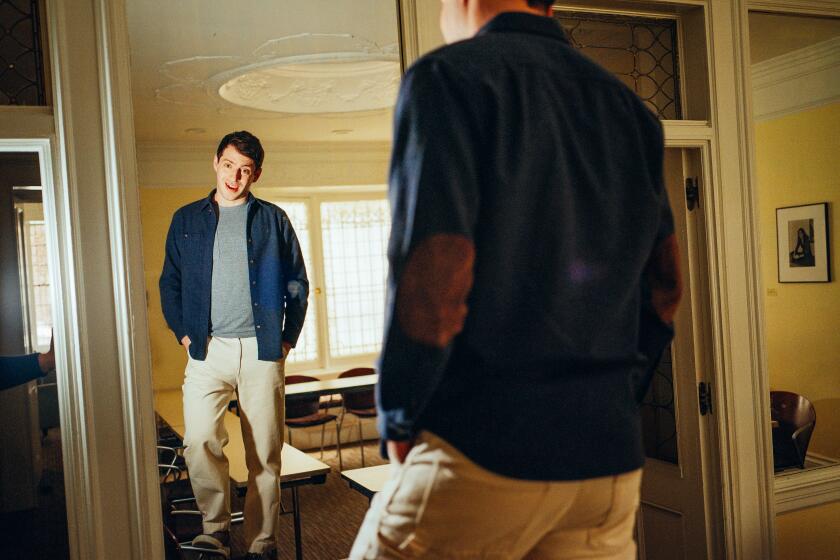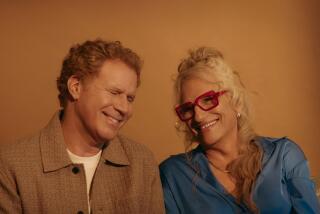Too gay? Too political? Ron Nyswaner leaned into it all with ‘Fellow Travelers’
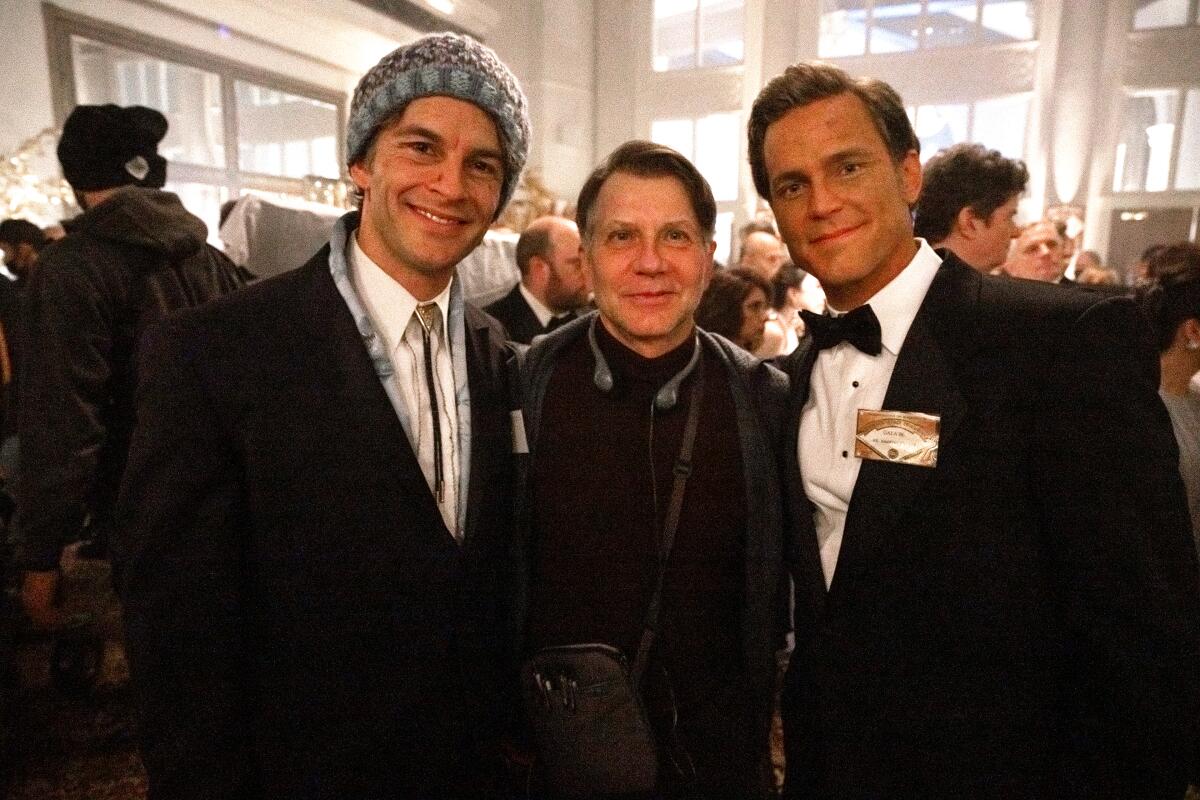
I began the pitch for “Fellow Travelers,” my adaptation of Thomas Mallon’s beautiful novel, with a piece of personal history. Growing up in a small Pennsylvania town in the 1960s, I never heard the word “homosexual” spoken aloud. There were no gay characters in movies, books or on television. I grew up believing that my hidden self was evil. Unspeakable.
I was captivated by Mallon’s story of Hawkins (Hawk) Fuller and Timothy Laughlin, two vastly different men conducting a passionate affair in 1950s Washington, D.C., during the government’s crusade against homosexuals. Hawk is selfish and confident. Tim is religious and sensitive. They struggle to love while hiding the part of themselves that allows them to love.
I was advised this story would be impossible to sell for three reasons: It was period, political and gay.
Being rebellious by nature, I decided to lean into the elements of the story that were deemed challenging. A period piece is problematic? In our scripts, every detail will be meticulously researched and much of the dialogue will come from historical records.
‘We were given the gift of a dream cast for a half-hour television comedy with mysterious twists and turns,’ writes ‘Only Murders’ showrunner John Hoffman. ‘We decided to triple down on the shot we were given.’
Rather than avoid politics, we’ll turn our political characters into flesh-and-blood antagonists, illuminating the dark secrets behind their destructive deeds. The whole thing is just too gay? We’ll create a gay love story with sex scenes that are passionate, tense and rough. We’ll take you on a gay sex tour through the decades, from park restrooms to backroom bars. In the end, we’ll break your heart.
We sold the show and made it. I have to acknowledge the executives at Fremantle and Showtime who embraced our “balls-out” approach (the expression seems apt) and my intrepid executive producers: Robbie Rogers, Dan Minahan and Matt Bomer.
We knew we needed to wrap our challenging elements inside a story that is universal and modern. The paranoia of the McCarthy era felt remote, and Mallon’s book ends in 1957. But I’d lived through the early days of AIDS, known the terror as those around me fell ill and died, and witnessed the hatred directed at my community.
I realized the AIDS crisis could serve as a bookend to the Lavender Scare. Tim would live in San Francisco, an activist, in the early days of the epidemic. Hawk will travel to Tim, seeking forgiveness, giving Tim power over Hawk in a reversal of their former roles. And these timelines will alternate throughout the show.
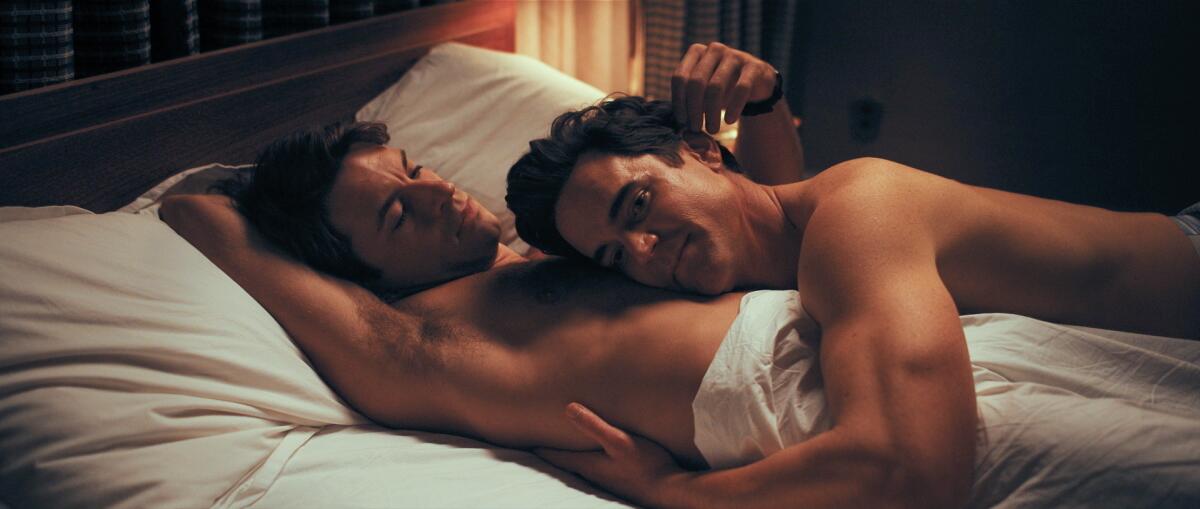
But the wheels of my mind kept turning. How might I bring Hawk and Tim together one or two more times? Again, I turned to personal history.
In high school, I was known as the sissy kid with liberal politics who loved Jesus. I protested the Vietnam War and refused to say the Pledge of Allegiance because the United States hadn’t yet achieved “liberty and justice for all.” When I was banished to the last row of desks in my homeroom, I considered it a badge of honor.
The sixth episode of the series, “Beyond Measure,” is set in 1968. Tim’s passionate anticommunist politics have morphed into antiwar politics. His Christianity, like mine in my youth, addresses his need to be exalted, to live and love “beyond measure.” In my teen years, my religious fervor offered what my peers found in sex, drugs and rock ’n’ roll.
I came out in the late 1970s, drinking, snorting and tumbling into bed with sweaty strangers after nights of dancing to Donna, Thelma and Grace. It was glorious. We had a few gay heroes but none more inspiring than Harvey Milk, the first nationally prominent gay politician. His murder was a shock and a wake-up call, reminding us that we’d only begun to win our freedom.
The Jewish stand-up comedian worked his interactions with white nationalists into “Just for Us,” an act that found its way to HBO.
Episode 7 of “Fellow Travelers,” “White Nights,” is set in 1979. Hawk and Tim reunite on Fire Island. They splash in the ocean, visit the “meat rack” and sweat on the dance floor. They seem free, until Hawk is forced to face excruciating grief. We placed our second set of lovers, Marcus and Frankie, in San Francisco, for the “explosion of gay rage” that followed the trial of Harvey Milk’s murderer, Dan White, and its obscene, lenient sentence.
Hawk’s grief, and his yearning to lose himself in drugs and sex, was informed by my own descent into alcoholism and addiction. The candlelight march honoring Milk that ends the episode is coupled with Hawk’s decision to return home. Twenty-five years ago, I began my own way home, finding a sober way to live.
The series ends at the National Mall in 1987 with the first display of the AIDS Quilt. Hawk kneels at Tim’s quilt square and gives words to the truth he’s carried in his heart for 3½ decades: “He was the man I loved.” Hawk finds redemption in speaking the unspeakable.
I know how he feels.
More to Read
From the Oscars to the Emmys.
Get the Envelope newsletter for exclusive awards season coverage, behind-the-scenes stories from the Envelope podcast and columnist Glenn Whipp’s must-read analysis.
You may occasionally receive promotional content from the Los Angeles Times.
